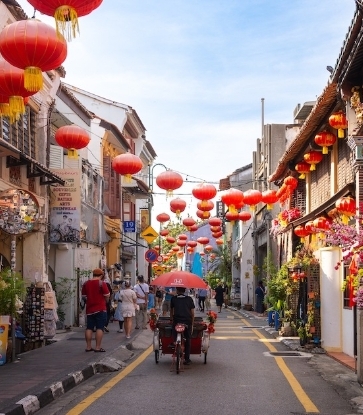In the last 16 years, the brand has rapidly grown to become an international company with more than 200 product lines and over 130 awards to their name; numerous offices around Europe, Asia and the Middle East and on the beverage menus of the very best hotels, restaurants, heritage venues and stores around the world. And this, according to the company, is only the beginning of their mission to revive the culture of enjoying fine tea.
We get an exclusive interview with Nirmal Sethia to get a rare glimpse at the business powerhouse behind the 16-year-old tea brand.
How did you get started in the tea industry?
I come from a well-known business family. As a rebel child of a very rich father, naturally, there were too many restrictions. I couldn’t smoke, drink or have a girlfriend, my driver took me everywhere. I was never interested in his business. So when I was 13 years old, I went to my dad and made a decision, and the best excuse for me was to tell him I wanted to experience poverty. I stopped schooling then, went to my father’s office in London and he arranged for a job for me in a sector where nobody knew my father - and that was in tea.
I became an apprentice in a tea broking house. In the 1960s, London used to be an auction hall and merchants from Ireland and everywhere would come to buy their tea. I was very dedicated because I was a rebel, I knew I had to survive.
Later on, I rejoined the family business dealing in jute and only re-joined the tea trade in 2004, after a 50-year “exile”. In the late 1990s, when I was adviser to the Russian government, we had always talked about getting back into the business. It was also around that time my nephews approached me for a loan to start a tea business, I agreed because it was my first love. When they wanted to shut down in 2000, that was when I stepped in.
What is it about tea that has kept you in the trade over these years?

Tea is like a beautiful woman: never to be judged by her appearance, but by her character. All teas look the same, whether it’s a cheap one you can buy for $2, or the most expensive ones you can pay US$10 to US$15million a kilogram for. The value of the tea can only be discerned by people who understand character, and to understand the character of a tea, you have to use your senses, all of your concentration. Tea is a meditation, it’s a romance with your palate.
We have always believed we were born to be different, not to be common. That is all I have learnt since I was born. Newby had to be different. Looking back at the history of tea, there was a constant deterioration of tea culture over time. I even shifted to drinking coffee because instead of drinking coffee is better than drinking horrible tea.
Today’s tea industry is supported by lies and marketing campaigns. Every tea company wants to use media to exploit the innocence of common people or the arrogance of the rich people. All you hear about is the practise of putting milk and sugar into tea, but the moment you do that, tea has lost its original character. Tea has become just a drink.

I couldn’t get involved in false marketing. So I designed a state-of-the-art production and preservation facility in Kolkata in India to cut short the voyage time in the tea trade. It’s a unique preservation facility and features air purifications systems, temperature control and humidity control systems because different teas from different climates require different temperature controls. The biggest enemy of tea is heat and humidity, and contamination. If there is a bad smell, it affects the tea.
Today, 49% of the tea company is owned by the N Sethia foundation, a UK-registered charity I founded in 1995. It supports international projects in the areas of education, medical research, disaster relief and hunger prevention, as well as autism support groups in the UK.

Tea will keep rising, and people will keep coming back to tea. Thanks to a greater awareness created by the Internet, people are less likely to be fooled by marketing and public relations companies trying to promote teas that are not good. This trend of putting milk and sugar into teas may abate - today probably 20 per cent of the world is suffering from diabetes and it is increasing. Imagine: if you take 10 cups of tea, you’re taking in 20 spoons of sugar. In a fast-growing market where people are health conscious, tea is going to become even more popular for gifting. Tea is something you can drink all day.
How important is good tea to the dining experience?
The last experience of a meal is always the most important experience. You might have bad food or average food, but if you have a wonderful cup of tea at the end of it, you might say wow, and you go back. But if you have the best food and the worst tea served to you at the end, you’ll say, my goodness, it’s horrible.






















